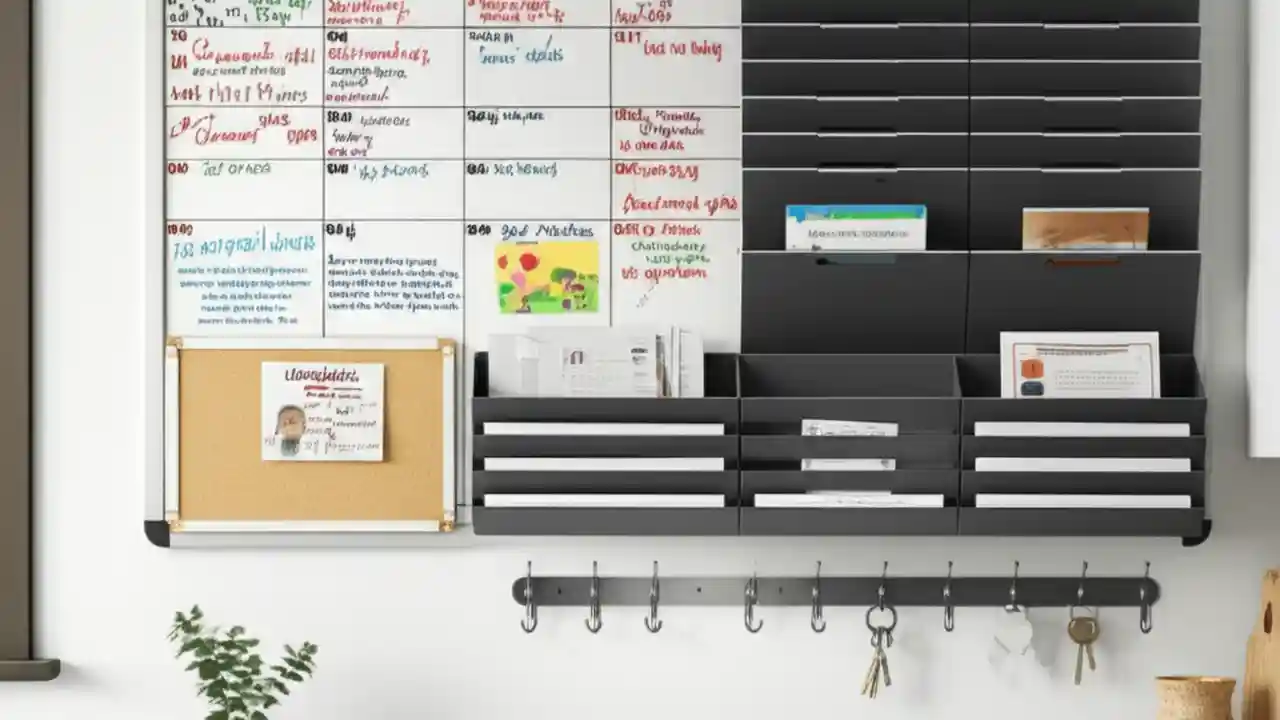Hosting a clothing swap with friends is a fantastically fun and sustainable way to refresh your wardrobe without spending a dime. The basic idea is simple: everyone brings quality clothes they no longer wear, and everyone gets to take home “new-to-you” items for free. It’s a win-win for your closet, your wallet, and the planet.
I remember my first swap back in the late 2000s. It was a bit chaotic, but the thrill of finding a designer jacket I’d never afford otherwise was hooked. After twenty years of refining the process, I can tell you that a little planning transforms a potentially messy free-for-all into a chic, organized, and memorable event. This guide will walk you through everything, from creating the perfect guest list and setting fair rules to managing the swap itself and dealing with leftovers. Let’s make your clothing swap an absolute success.
Table of Contents
Getting Started: The What & Why of Clothing Swaps
Before you start sending out texts, let’s cover the fundamentals. Understanding the concept and its benefits will help you get your friends excited and ensure everyone is on the same page. It’s more than just getting free clothes; it’s a social event rooted in sustainability and community.
What is a clothing swap, really?
At its core, a clothing swap is a party where guests trade clothing and accessories they no longer want. Think of it as a potluck for your closet. Instead of bringing a dish to share, you bring a bag of gently used garments. The items are displayed, and everyone “shops” from the collective pile, taking home whatever they like.
It’s a circular economy in action. The dress that’s been sitting in the back of your closet for a year could be your friend’s new favorite outfit. And that pair of jeans she never wears might be your perfect fit. It’s a beautiful, simple exchange that extends the life of our clothes.
Why host a clothing swap instead of just donating?
Donating is a great option, but a swap offers unique advantages that make it a compelling alternative, especially for high-quality items.
- It’s Social: A swap is a party! It’s a reason to get together, catch up, and bond over fashion. You get to see your old favorites find a new, loving home with people you know.
- You Get Something Back: Unlike donating, you walk away with a refreshed wardrobe. It satisfies the desire for “newness” without the environmental or financial cost of fast fashion.
- Guaranteed Good Homes: You know your cherished items are going to friends who will appreciate them, not potentially ending up in a landfill, which can sadly happen with some donation streams.
- It’s Inspiring: Seeing how a friend styles your old shirt can give you new ideas. It’s a fun, collaborative fashion experience.
Selling vs. Swapping: Which is Right for You?
Wondering if you should try to sell your clothes on Poshmark or Depop instead? Both have their pros and cons. Selling can earn you cash, but it’s a significant time investment. Swapping is about community and instant gratification. Here’s a quick breakdown to help you decide.
| Factor | Selling Clothes Online | Hosting a Clothing Swap |
|---|---|---|
| Effort | High (photos, listings, packing, shipping) | Moderate (one-time event planning) |
| Reward | Cash (can be slow and unpredictable) | New clothes, fun social event (instant) |
| Time Commitment | Ongoing, can take weeks or months to sell | A few hours for one event |
| Best For | High-value designer items, making money | Refreshing your wardrobe, community, sustainability |
| Social Aspect | Low (mostly transactional) | High (it’s a party!) |
The Ultimate Planning Checklist: 1-2 Weeks Out
A little organization goes a long way. Taking care of these key details a week or two in advance will ensure your swap is stress-free and enjoyable for everyone, including you!
How do I pick the perfect guest list?
The number of guests is crucial. Too few, and the selection will be sparse. Too many, and your living room will feel like a chaotic Black Friday sale. The sweet spot is typically 8 to 15 people.
Consider inviting friends with a mix of styles and, if possible, a range of sizes. This creates a more diverse and interesting selection for everyone. Don’t be shy about asking your friends to invite a plus-one, but ask them to RSVP so you can keep track of the headcount. The goal is a critical mass of clothes, not a mob of people.
Crafting the perfect invitation: What to include
Your invitation sets the tone and, more importantly, the rules. A clear, friendly invite prevents confusion on the day of the swap. Send it out via email, text, or a private social media event about two weeks ahead of time.
Here’s what your invitation must include:
- The Basics: Date, Time, Location.
- The Concept: A brief, exciting explanation of what a clothing swap is for any first-timers.
- The Rules of Entry: This is the most important part! Be specific. For example: “Please bring 5-10 quality items. Think clean, gently used, and in great condition—things you’d be happy to give to a friend.”
- What to Bring: Specify types of items. Clothing, shoes, handbags, scarves, and jewelry are all great. It’s often best to exclude things like lingerie, socks, or heavily worn items.
- The Plan for Leftovers: Let guests know what will happen to any unclaimed items. “Anything left at the end will be donated to [Local Charity Name]” is a great way to handle this.
- RSVP Date: So you know how many people and how much Prosecco to plan for!
Setting the Ground Rules for a Fair & Fun Swap
Clear rules are your best friend. They prevent awkwardness and ensure everyone has a good time. Establish these in the invitation and gently reiterate them at the start of the party.
- The Quality Standard: The golden rule is to only bring items you would be excited to receive. This means clean, free of stains or damage, and ready to wear. No one wants your stretched-out sweatpants.
- Minimum/Maximum Items: A 5-15 item range per person usually works well. It ensures everyone contributes but no one overwhelms the space.
- Arrival and Setup Time: Ask guests to arrive 15-30 minutes before the “shopping” begins. This gives everyone time to display their items, grab a drink, and socialize without pressure.
- The “Shopping” Method: Decide how the swap will work. Will it be a polite free-for-all or a more structured system? (More on this below!)
Setting the Scene: The Day Before the Swap
With the guest list and rules sorted, it’s time to prepare your space. Creating a boutique-like feel makes the event feel special and makes browsing much easier.
How do I prepare my space for maximum flow?
You don’t need a huge house, just a smart layout. Your goal is to create distinct zones for clothes, trying things on, and socializing.
- Clear the Decks: Move unnecessary furniture to the walls or another room to maximize floor space.
- Create “Departments”: Set up different areas for different types of clothing. Use tables for folded items like sweaters and jeans, and a designated spot for shoes and accessories.
- Hanging Space is Key: The best way to display clothes is on hangers. If you don’t have enough closet space, a portable garment rack is a fantastic investment. You can often find them for under $20 online.
- The “Fitting Room”: Designate a bedroom or bathroom as a changing area. Make sure you have at least one full-length mirror available. If you have multiple, place them around the swap area so people can see how things look without a long wait.
What essential supplies do I need? (A complete checklist)
Having these items on hand will make you look like a hosting pro and keep things running smoothly.
- Full-Length Mirror(s): The more, the better.
- Garment Rack(s): A lifesaver for displaying dresses, blouses, and jackets.
- Hangers: Ask guests to bring their items on hangers, but have a stash of extras just in case.
- Tables or Flat Surfaces: For folded items, shoes, and accessories.
- Shopping Bags: Provide some reusable bags for guests to carry their new treasures home.
- Tags & Pens (Optional): For a ticket-based system.
- Snacks & Drinks: Keep them simple and easy to eat while mingling.
- Music: A good playlist sets a fun, relaxed vibe.
- Bags/Boxes for Leftovers: For easy cleanup and transport to the donation center.
To snack or not to snack? Food and drink ideas
Absolutely snack! It turns the swap from a transaction into a party. However, keep it simple and low-mess. You don’t want anyone spilling red wine on a white silk blouse.
Good options include:
- Drinks: Prosecco, white wine, sparkling water with lemon, or a fun non-alcoholic punch.
- Finger Foods: A cheese board, a bowl of grapes, mini cupcakes, pretzels, or popcorn. Avoid anything greasy, saucy, or crumbly.
Set up the food and drinks in an area away from the clothes, like the kitchen island or a separate side table, to minimize the risk of spills.
Swap Day! How to Run the Event Smoothly
The day is here! Your role as host is to guide the event, keep the energy positive, and make sure the rules are followed in a fun, low-key way.
What’s the best way to organize the clothes?
As guests arrive, direct them to the designated areas. This is where your “departments” come into play. Have them hang up their hanging items and neatly place folded clothes and accessories on the tables. This prevents a giant, overwhelming pile from forming in the middle of the floor.
You can organize by:
- Item Type (Recommended): All tops in one area, pants in another, dresses on the rack, etc. This is the most intuitive way for people to shop.
- Size (Optional): This can be helpful but also tricky, as sizing varies so much between brands. It often works better to let people browse by item type and check sizes themselves.
Encourage everyone to mingle and look around during this setup phase. This builds anticipation and allows people to “pre-shop” and scout out items they’re interested in.
The Great Debate: Free-for-all vs. a Ticket System
This is the most critical decision for fairness. A “free-for-all” works for smaller, very close-knit groups, but a structured system is often better for larger crowds or groups where people don’t know each other as well.
| Swap Method | How It Works | Pros | Cons |
|---|---|---|---|
| Free-for-all | Once all items are displayed, the host says “go!” and everyone shops at will. | Casual, low-effort for the host, high energy. | Can be chaotic, more assertive guests might grab more items. |
| Ticket/Token System | When a guest arrives, you give them one token for each item they brought. To “buy” an item, they give you a token. | Extremely fair (you take as many items as you bring), prevents hoarding. | Requires more management from the host (handing out/collecting tokens). |
| Round Robin | Guests draw numbers. Person #1 picks one item, then #2, and so on. After everyone has picked one, you start a second round. | Very orderly and fair, ensures everyone gets a chance at a coveted item. | Can be slow, might lose energy between rounds. |
For most swaps with 8-15 people, I personally recommend the Ticket/Token System. It’s the perfect balance of fairness and fun without being too slow.
How to be a great host and keep the energy high
Your vibe sets the tone. Be an active, engaged host!
- Play Matchmaker: “Sarah, this jacket would look amazing on you!” or “Hey, who brought this amazing dress? Jen, you should try it on!”
- Enforce Rules Gently: Remind everyone when the swap is about to start. If using a system, explain it clearly and cheerfully.
- Manage the Flow: Keep an eye on the “fitting room” area to make sure there isn’t a bottleneck. Keep the snacks and drinks topped up.
*Encourage Try-Ons: Hype people up! Create a supportive atmosphere where everyone feels comfortable trying things on and giving/receiving compliments.
The Aftermath: What to Do With Leftover Clothes
Inevitably, there will be items left over. Having a plan for this is a key part of responsible hosting. Don’t just leave a giant bag of clothes sitting in your hallway for a month (I’ve been there).
Where can I donate the remaining items?
This is the most common and easiest option. Before the swap, research local charities. Some great options beyond the big-name thrift stores include:
- Local Women’s Shelters: They often need professional and casual clothing for women re-entering the workforce.
- Dress for Success: A fantastic organization that specifically needs business-appropriate attire.
- Free Clothing “Stores”: Some community centers or churches run programs where people in need can take clothes for free.
- Textile Recycling Programs: For any items that are too worn to be donated, look for a local textile recycling drop-off to keep them out of the landfill.
As the host, it’s generally your responsibility to take the leftovers for donation. Make it easy on yourself by having bags or boxes ready to go at the end of the party.
Creative ideas for repurposing leftover garments
If you or your friends are crafty, you can get creative with the leftovers!
- Host a “Mending & Upcycling” Party: A follow-up event where you teach each other basic sewing, dyeing, or embroidery to give old pieces new life.
- Cut into Rags: Cotton t-shirts and other soft fabrics make excellent cleaning rags.
- Pet Bedding: Old sweaters and soft fabrics can be used to stuff a comfy bed for a furry friend.
Conclusion
Hosting a clothing swap is more than just a clever way to clean out your closet—it’s an act of community building and a powerful statement against fast fashion. With a bit of planning, you can create a memorable, fun, and impactful event that leaves everyone with a smile and a few “new” favorite outfits. It’s the ultimate sustainable style hack. Now go on, send that invitation and get ready to swap! If you found this guide helpful, please share it with a friend you’d love to swap with.









